Kyoto’s Traditional Mochi: 11 Must-Try Varieties You Can’t Miss
As you stroll through the charming streets of Kyoto, you’ll be greeted by the sight of numerous mochi shops, each one more inviting than the last. Each handcrafted piece reflects generations of tradition, offering a chewy, delicate bite that’s both comforting and refined. From ancient recipes passed down for centuries to seasonal creations found only at local shrines and festivals, Kyoto’s traditional mochi is more than just a sweet—it’s a cultural experience. With such a rich variety to explore, each mochi tells its own story through flavor, texture, and history
Here are 11 must-try varieties of Kyoto’s traditional mochi you won’t want to miss.
Kyoto’s Traditional Mochi
1. Yakimochi
Sold near the iconic Kamigamo Shrine, yakimochi is grilled mochi filled with sweet red bean paste (anko). The grilling adds a crisp outer layer that contrasts perfectly with its soft, chewy interior.
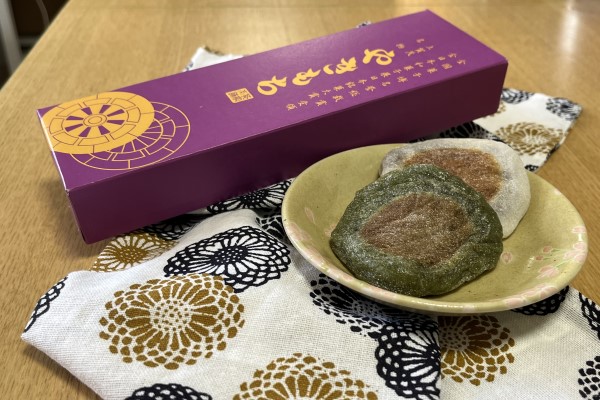
Available in white and green varieties (the green contains a hint of mugwort), both versions offer a well-balanced sweetness that makes it easy to enjoy more than one.
2. Mame mochi
Step out of Demachiyanagi Station and you’ll see a line forming at Demachi Futaba, a mochi shop over 100 years old. Their signature mame mochi is filled with sweet anko and dotted with salted beans for a delightful contrast of flavors.
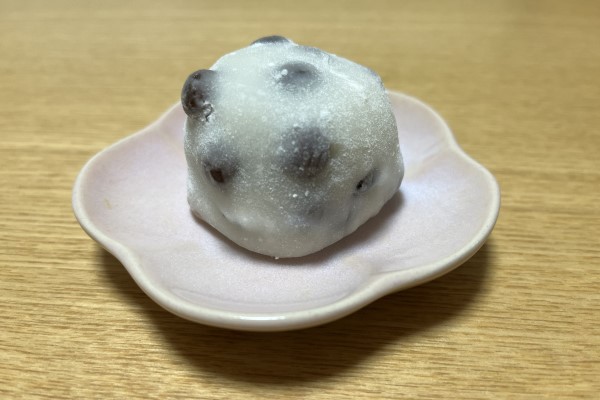
The generous size of each piece makes it a satisfying snack—well worth the wait. If you love Kyoto, you should try this mochi at least once.
3. Aburimochi
At the entrance of Imamiya Shrine are a couple of Kyoto’s traditional mochi shops. Two centuries-old establishments serve aburimochi—bite-sized pieces of mochi dusted with roasted soybean flour (kinako), grilled on bamboo skewers, and topped with sweet white miso sauce.
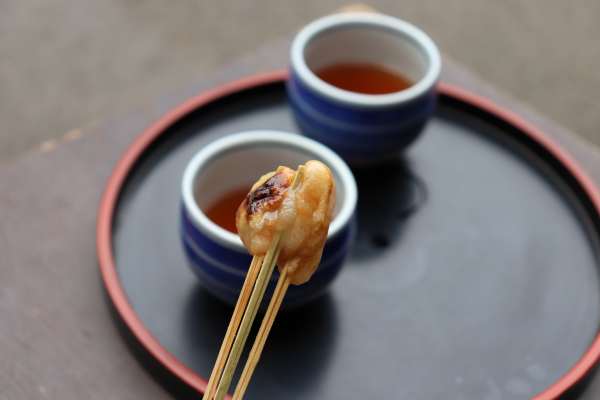
The taste resembles mitarashi dango, which I personally can’t get enough of. Unfortunately, they lose their freshness quickly, so it’s best to eat them at the restaurant!
4. Hashirii Mochi
Near Ishimizu Hachimangu Shrine, Hashirii mochi is made using habutae mochi, known for its silky texture. Filled with smooth koshian (refined red bean paste), it traces its origins to 18th-century Otsu, using the famous spring water of the same name.
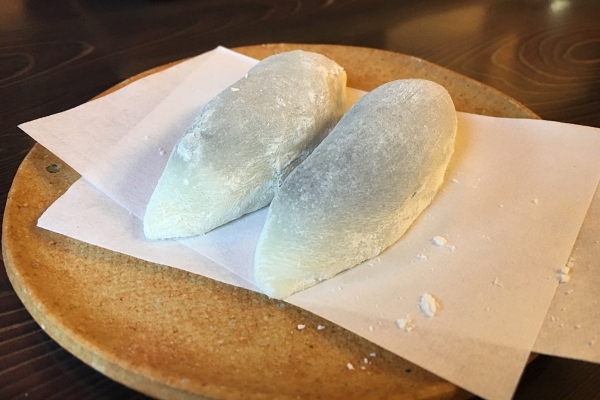
Enjoy it at the café at Iwashimizu Hachimangu Station for a truly local experience.
5. Oseki mochi
South of Kyoto, along the Toba Kaido near Jonan-gu Shrine, you’ll find oseki mochi. These chewy rice cakes—available in both white and green varieties—are topped with a generous portion of chunky red bean paste (tsubuan).

Similar to Akafuku and Chie no Mochi, they offer a nostalgic taste of Kyoto tradition.
6. Inokomochi
People traditionally eat Inoko mochi each November on the “day of the boar” to pray for health and fertility. Because boars give birth to many offspring, this symbolic mochi represents wishes for family prosperity and well-being. Shaped and inspired by baby boars, the red-hued mochi contain sweet anko and vary in appearance depending on the shop.
In the yin-yang five elements theory, the boar symbolizes water, so many people eat Inoko mochi to protect themselves from fire.
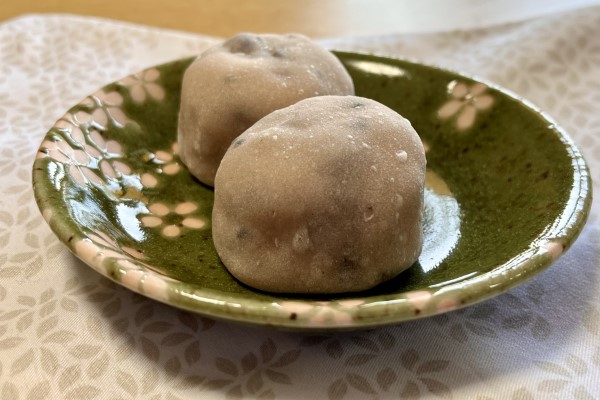
These humble mochi have deep cultural roots that date back to The Tale of Genji, making them as meaningful as they are tasty.
7. Hanabiramochi
Traditionally eaten during the New Year, hanabira mochi is made with soft white mochi, filled with sweet white miso paste, and features a distinctive piece of burdock root (gobo) in the center.
Originating from the large mochi called hishihanabira during the New Year ritual at the imperial court, it was simplified and became much smaller during the Edo period, evolving into hanabira mochi.
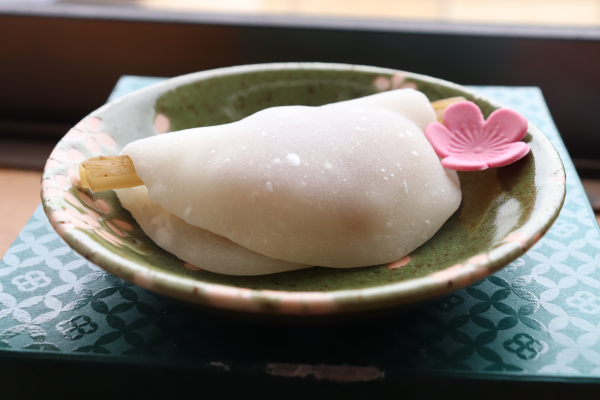
Hanabira mochi is a traditional Japanese treat made by wrapping white miso paste in mochi. One of its most distinctive features is the inclusion of burdock root, known as gobo in Japanese. While people traditionally enjoyed sweetfish with mochi, this dish has evolved to feature burdock root instead.
Burdock root has a unique and subtle flavor that can be polarizing; however, it offers a distinctive experience for those willing to try a true specialty of Kyoto, especially during the New Year celebrations.
8. Fu Manju
Fu manju stands out by using fu (wheat gluten) instead of rice flour. It’s filled with koshian and wrapped in bamboo leaves, imparting a subtle, refreshing flavor that makes it ideal for summer.
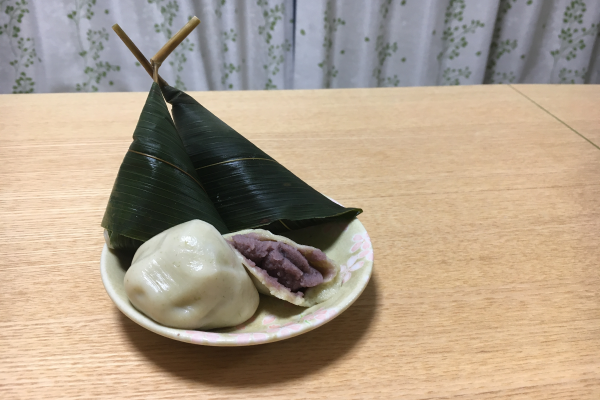
In Kyoto, it can be purchased at several Japanese confectionery shops, including the long-standing Fuka in Marutamachi.
9. Chogoro Mochi
Served at the legendary 1587 Kitano Grand Tea Ceremony by Toyotomi Hideyoshi, Chogoro mochi holds a special place in Kyoto’s confectionery history. Once Hideyoshi took a bite of it, he quite liked it and named the mochi himself.
Still sold within the Kitano Tenmangu Shrine grounds, this mochi is a must for history and tea ceremony enthusiasts alike.
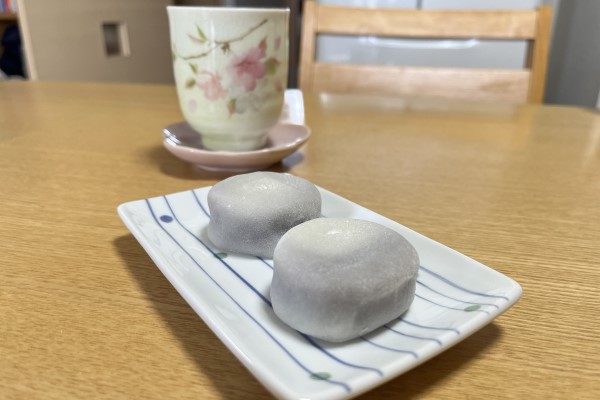
10. Mugite mochi
Farmers originally ate mugite mochi as a snack and named it because they traditionally traded it for harvested wheat (mugi).
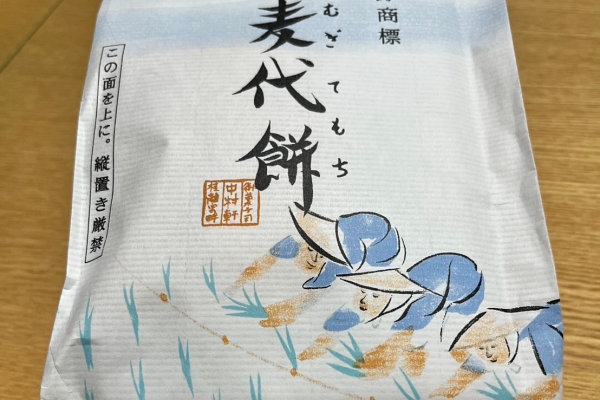
Mugai mochi is very simple, consisting of chewy mochi wrapped around anko (tsubuan) with a subtle sweetness. It comes with kinako, so you should generously sprinkle it with kinako!
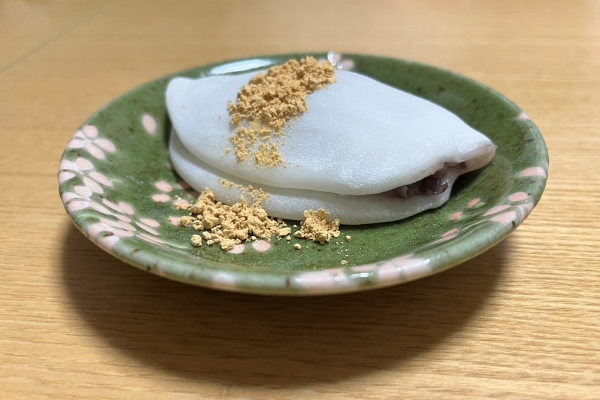
Buy it fresh from Nakamuraken near Katsura Rikyu, but be quick—it only lasts a day!
11. Chigo mochi
Created specifically for the main shrine of Kyoto’s Gion Festival, chigo mochi is still closely associated with this event. This mochi has now become a beloved seasonal treat widely available at Kyoto confectionery shops during the festival period.
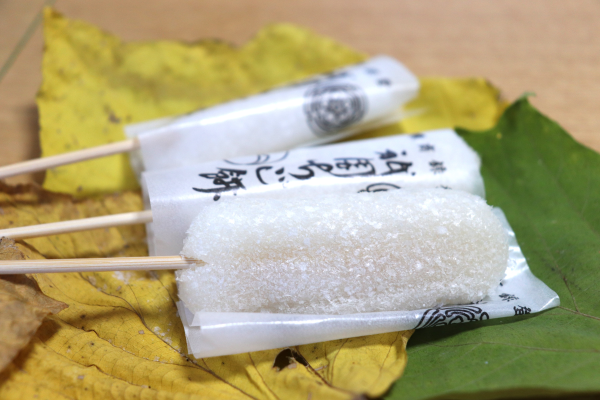
This delicate sweet features sweetened white miso paste wrapped in gyuhi, a softer, more elastic form of mochi. What makes chigo mochi especially unique is the topping of crystal sugar, which adds a light crunch and a touch of sparkle, balancing beautifully with the mellow miso flavor.
Vendors typically serve chigo mochi in sets of three, skewered on bamboo sticks. Its subtle sweetness and refreshing texture make it an ideal snack during the warm festival season, whether you’re walking through the lively streets of Gion or enjoying a quiet moment with tea.
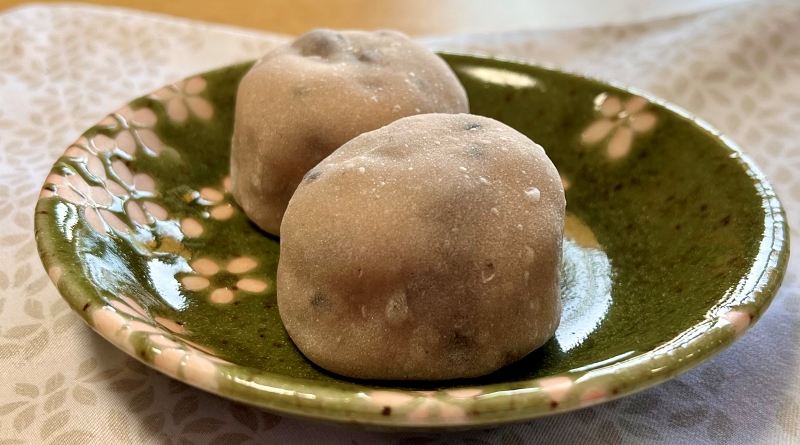
Leave a Reply